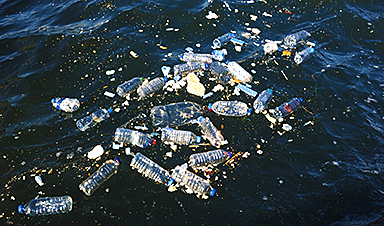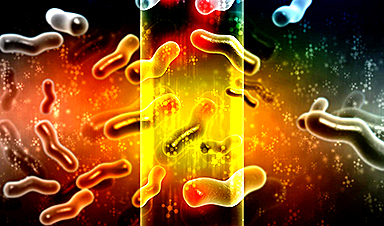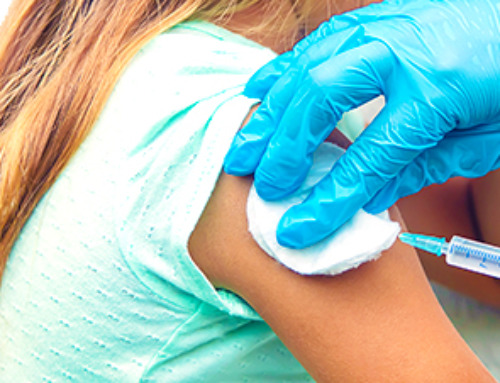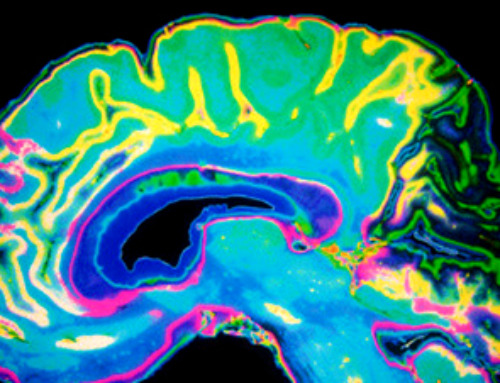Researchers at the Weizmann Institute have developed a biodegradable composite material that could play a significant role in addressing the global plastic waste crisis.
Billions of tons of plastic waste clutter our planet. Most of it accumulates on land, settles in the oceans, or disintegrates into tiny particles called microplastics, which pollute the air and water, infiltrating vegetation as well as the bloodstreams of humans and animals. The threat posed by plastics intensifies each year, as they are composed of massive molecules called polymers that resist biodegradation. Currently, biodegradable plastics account for less than one-fifth of total plastic production, and the processes required to break them down remain relatively cumbersome.
In a study published in ACS Nano, Dr. Angelica Niazov-Elkan, Dr. Haim Weissman and Prof. Boris Rybtchinski of the Molecular Chemistry and Materials Science Department at the Weizmann Institute of Science have created a new composite plastic that degrades easily using bacteria. This new material, produced by combining a biodegradable polymer with crystals from a biological substance, has three major benefits: It is cheap, easy to prepare, and very strong. Also participating in the study were the late Dr. Eyal Shimoni, Dr. XiaoMeng Sui, Dr. Yishay Feldman, and Prof. H. Daniel Wagner.
Currently, many industries are enthusiastically adopting composite plastics, which are made by combining two or more pure materials and possess the various beneficial properties such as lightness and strength. These plastics now serve to manufacture key parts of a wide variety of industrial products, from airplanes and cars to bicycles.
The Rise of Composite Plastics
Seeking to create a composite plastic that would meet the needs of industry while also being environmentally friendly, the Weizmann researchers decided to focus on commonplace, inexpensive source materials whose properties could be improved. They found that molecules of tyrosine – a prevalent amino acid that forms exceptionally strong nanocrystals – could be used as an effective component in a biodegradable composite plastic. After examining how tyrosine combines with several types of polymers, they chose hydroxyethyl cellulose, a derivative of cellulose, which is employed extensively in the manufacture of medicines and cosmetics.
On its own, hydroxyethyl cellulose is a weak material that disintegrates readily. To combine it with tyrosine, the two materials were mixed together in boiling water. When they cooled and dried, an exceptionally strong composite plastic was formed, made of fiber-like tyrosine nanocrystals that grew into the hydroxyethyl cellulose and integrated with it. In one experiment that revealed the new plastic's strength, a 0.04-millimeter-thick strip of the material withstood a load of 6 kilograms.
Moreover, the team discovered that the new material had several other unique characteristics, making it even more useful for industry. Usually, when a material is strengthened, it loses plasticity.
Unique Properties and Industrial Potential
This new composite plastic, however, in addition to being very strong, is also more ductile (malleable) than its core component, hydroxyethyl cellulose. In other words, combining the two materials created a synergy that manifests itself in the emergence of extraordinary properties and, consequently, has massive industrial potential.
Since both cellulose and tyrosine – the crystals of which can be found in various types of hard cheese – are edible, the biodegradable composite plastic can actually be eaten. Is it also tasty? We will have to wait to find out: Since the production process in the lab is not hygienic enough for foodstuffs, the researchers are yet to have a nibble.
Rybtchinski sums up: "The follow-up study that we have already started could advance the commercial potential of this new material, since we have replaced the boiling in water with melting, as is more common in industry. This means that we heat up the biodegradable polymers until they become liquid and then mix in the tyrosine or other suitable materials. If we manage to overcome the scientific and technical challenges involved in this process, we will be able to explore the possibility of producing this new composite plastic on an industrial scale."
Reference: "Emergent Self-Assembly of Sustainable Plastics Based on Amino Acid Nanocrystals" by Angelica Niazov-Elkan, Haim Weissman, Eyal Shimoni, XiaoMeng Sui, Yishay Feldman, H. Daniel Wagner and Boris Rybtchinski, 23 October 2023, ACS Nano.
DOI: 10.1021/acsnano.3c02528
Prof. Boris Rybtchinski's research is supported by the Tom and Mary Beck Center for Advanced and Intelligent Materials and the Wolfson Family Charitable Trust & the Wolfson Foundation.
News
Researchers highlight five pathways through which microplastics can harm the brain
Microplastics could be fueling neurodegenerative diseases like Alzheimer's and Parkinson's, with a new study highlighting five ways microplastics can trigger inflammation and damage in the brain. More than 57 million people live with dementia, [...]
Tiny Metal Nanodots Obliterate Cancer Cells While Largely Sparing Healthy Tissue
Scientists have developed tiny metal-oxide particles that push cancer cells past their stress limits while sparing healthy tissue. An international team led by RMIT University has developed tiny particles called nanodots, crafted from a metallic compound, [...]
Gold Nanoclusters Could Supercharge Quantum Computers
Researchers found that gold “super atoms” can behave like the atoms in top-tier quantum systems—only far easier to scale. These tiny clusters can be customized at the molecular level, offering a powerful, tunable foundation [...]
A single shot of HPV vaccine may be enough to fight cervical cancer, study finds
WASHINGTON -- A single HPV vaccination appears just as effective as two doses at preventing the viral infection that causes cervical cancer, researchers reported Wednesday. HPV, or human papillomavirus, is very common and spread [...]
New technique overcomes technological barrier in 3D brain imaging
Scientists at the Swiss Light Source SLS have succeeded in mapping a piece of brain tissue in 3D at unprecedented resolution using X-rays, non-destructively. The breakthrough overcomes a long-standing technological barrier that had limited [...]
Scientists Uncover Hidden Blood Pattern in Long COVID
Researchers found persistent microclot and NET structures in Long COVID blood that may explain long-lasting symptoms. Researchers examining Long COVID have identified a structural connection between circulating microclots and neutrophil extracellular traps (NETs). The [...]
This Cellular Trick Helps Cancer Spread, but Could Also Stop It
Groups of normal cbiells can sense far into their surroundings, helping explain cancer cell migration. Understanding this ability could lead to new ways to limit tumor spread. The tale of the princess and the [...]
New mRNA therapy targets drug-resistant pneumonia
Bacteria that multiply on surfaces are a major headache in health care when they gain a foothold on, for example, implants or in catheters. Researchers at Chalmers University of Technology in Sweden have found [...]
Current Heart Health Guidelines Are Failing To Catch a Deadly Genetic Killer
New research reveals that standard screening misses most people with a common inherited cholesterol disorder. A Mayo Clinic study reports that current genetic screening guidelines overlook most people who have familial hypercholesterolemia, an inherited disorder that [...]
Scientists Identify the Evolutionary “Purpose” of Consciousness
Summary: Researchers at Ruhr University Bochum explore why consciousness evolved and why different species developed it in distinct ways. By comparing humans with birds, they show that complex awareness may arise through different neural architectures yet [...]
Novel mRNA therapy curbs antibiotic-resistant infections in preclinical lung models
Researchers at the Icahn School of Medicine at Mount Sinai and collaborators have reported early success with a novel mRNA-based therapy designed to combat antibiotic-resistant bacteria. The findings, published in Nature Biotechnology, show that in [...]
New skin-permeable polymer delivers insulin without needles
A breakthrough zwitterionic polymer slips through the skin’s toughest barriers, carrying insulin deep into tissue and normalizing blood sugar, offering patients a painless alternative to daily injections. A recent study published in the journal Nature examines [...]
Multifunctional Nanogels: A Breakthrough in Antibacterial Strategies
Antibiotic resistance is a growing concern - from human health to crop survival. A new study successfully uses nanogels to target and almost entirely inhibit the bacteria P. Aeruginosa. Recently published in Angewandte Chemie, the study [...]
Nanoflowers rejuvenate old and damaged human cells by replacing their mitochondria
Biomedical researchers at Texas A&M University may have discovered a way to stop or even reverse the decline of cellular energy production—a finding that could have revolutionary effects across medicine. Dr. Akhilesh K. Gaharwar [...]
The Stunning New Push to Protect the Invisible 99% of Life
Scientists worldwide have joined forces to build the first-ever roadmap for conserving Earth’s vast invisible majority—microbes. Their new IUCN Specialist Group reframes conservation by elevating microbial life to the same urgency as plants and [...]
Scientists Find a Way to Help the Brain Clear Alzheimer’s Plaques Naturally
Scientists have discovered that the brain may have a built-in way to fight Alzheimer’s. By activating a protein called Sox9, researchers were able to switch on star-shaped brain cells known as astrocytes and turn them into [...]





















